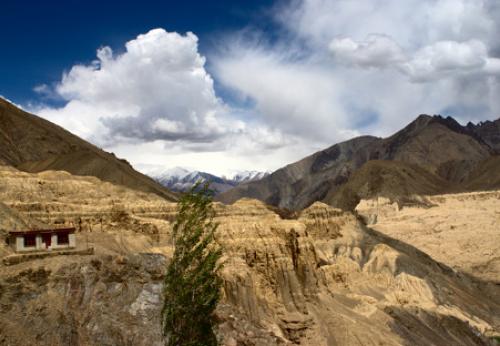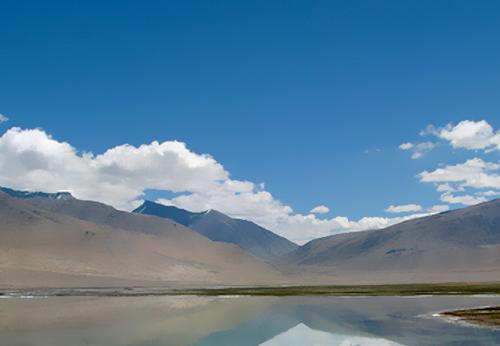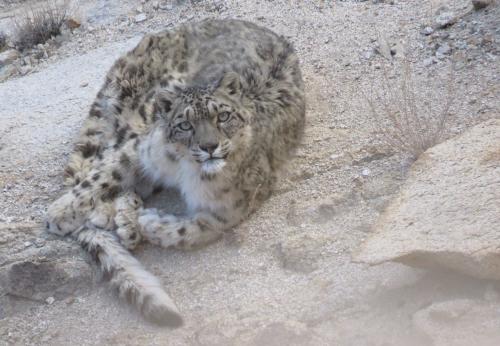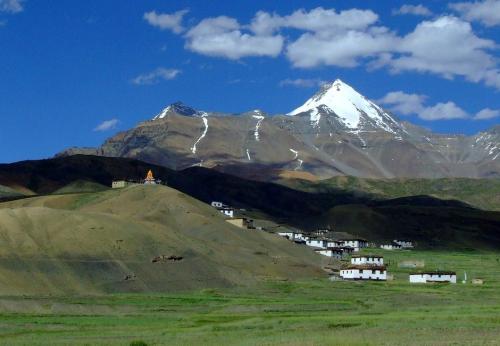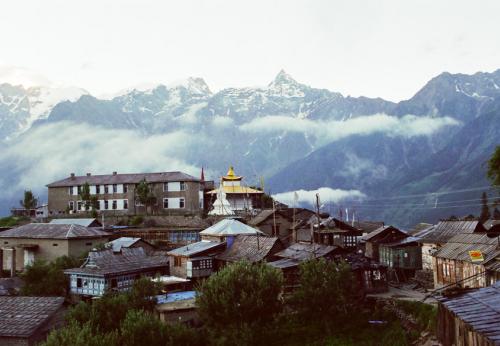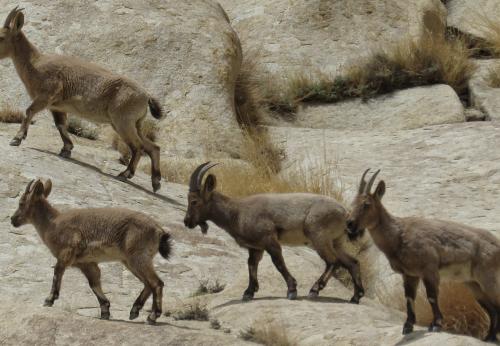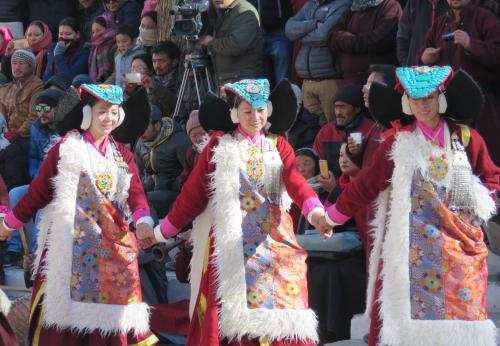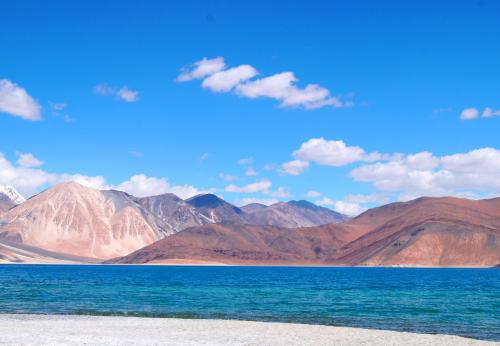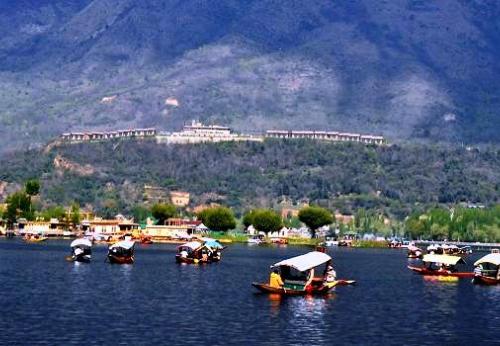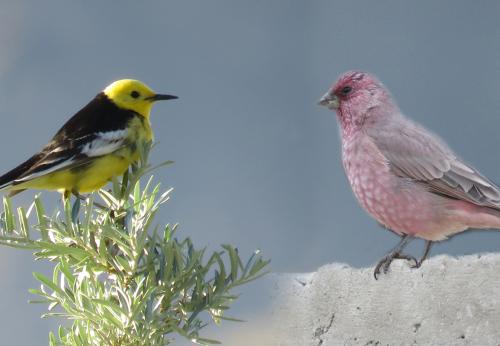Leh Ladakh History
Leh, the capital of Ladakh is situated at a height of 3505 meters and is towards the eastern parts of Jammu and Kashmir. The region is watered by the Zanskar River, which flows into the Indus River just below. Spilling out of a side valley that tapers north towards eroded snow-capped peaks, the Ladakhi capital sprawls from the foot of a ruined Tibetan style palace - a maze of mud-brick and concrete flanked on one side by cream-coloured desert, and on the other by a swathe of lush irrigated farmland. As one approaches Leh for the first time, via the sloping seep of dust and pebbles that divide if from the floor of the Indus Valley, one will have little difficulty imagining how the old trans -Himalayan traders must have felt as they plodded in on the caravan routes from Yarkhand and Tibet: a mixture of relief at having crossed the mountains in one piece, and anticipation of a relaxing spell in one of central Asia's most scenic and atmospheric towns. Leh is a beautiful destination with so many attractions and is the center of Tibeto-Buddhist Culture for ages. Its colorful gompas have attracted the devout Buddhists from all over the globe. Besides, it is also a favorite hiking locale and is known for some of the best hikes in the country.
 |
 |
 |
History Of Leh
King Sengge Namgyal who ruled Ladakh during 17th century and during whose rule Ladakh was at its greatest shifted his court from Shey to Leh. Leh became the regional capital and very soon the town blossomed into one of the busiest markets on the Silk Route. During the 1920s and 1930s, the broad bazaar that still forms its heart received more than a dozen pony- and camel-trains each day. Leh's prosperity, managed mainly by the Sunni Muslim merchants whose descendants live in its labyrinthine old quarter, came to an abrupt end with the closure of the Chinese border in the 1950's. However its fortunes begin to look up after India rediscovered the hitherto forgotten capital's strategic value after two wars in quick succession with Pakistan . Today, Khaki-clad Jawans (soldiers) and their families from the nearby military and air force bases are the mainstay of the local economy in winter, when foreign visitors are few and far between.
Gates Opened For Tourists
Indian government's decision in 1974 to open Ladakh to foreign tourists was a major shake-up. From the start, Leh bore the brunt of the annual invasion, as busloads of backpackers poured up the road Srinagar. Twenty or so years on, though the main approach is now via Himachal Pradesh rather than Kashmir, the summer influx shows no sign of abating. Leh has doubled in size and is a far cry from the sleepy Himalayan town of the early 1970's. During July and August tourists stroll shoulder to shoulder down its main street, most of whose old style outfitters and provision stores have been squeezed out by Kashmiri handicraft shops, art emporiums and Tibetan restaurants. Around the Town .
Leh Palace
Leh Palace is one of the most captivating architectural ruins that attract the attention of the tourists almost immediately with its majestic setting at the edge of the Namgyal hill and overlooking the town. Built in the 17th century, it was built as the residential palace for the King Singge Namgyal. Much smaller but resembling the Potala in Lhasa, Leh Palace is now on a restoring part. It has nine storeys and has been deserted since the royal family shifted to the Stok Palace in 1830s. nine storeys, It was the home of the royal family until they were exiled to Stok in the 1830s. The Victory Tower set above the palace was built to commemorate the victory of brave Ladakhi soldiers over the invading armies of Balti Kashmiris in the early 16th century. Today, Leh Palace serves as musuem by the office of the Indian Government's archaeological conservation organization.
Leh Palace is an excellent example of the medieval Tibetan architecture. It features colossal inclined buttressed walls and protruding wooden balconies. It has suffered massive destruction being at the receiving end of the Kashmiri cannons and one has to be careful while walking through the ruins, watching out for the gaping holes in the floors and dark staircases. The highlights of the place are flaking murals trying to let the visitors glimpse the erstwhile glory and splendor of the ruined royal apartments and its roof terrace offers picturesque views of the town and the snow-capped Stok Kangri Mountains. Also worth of note is the gloomy Dukhar temple housed on the fourth storey with a thousand armed image of its deity, Goddess Tara, along with some wonderful and peculiar masks, musical instruments and weapons used once as props, to accompany the occasional recitals and religious ceremonies held in the courtyard of the palace outside.
Around The Town
Leh has nonetheless retained a more tranquil side, and is a pleasant place to unwind after a long journey. Attractions in and around the town itself include the former Palace and Namgyal Tsemo Gompa, perched amid strings of prayer flags above the narrow dusty streets of the Old Quarter. A short walk north across the fields, the small monastery of Sankar harbours accomplished modern Tantric murals and a thousand beaded Avalokitesvara (also spelt as Avalokiteshvara) deity. Leh is also a good base for longer day trips out into the Indus Valley. Among the string of picturesque villages and Gompas within reach by bus are Shey, site of a derelict 17th century palace, and the Spectacular Thikse Gompa. Until one has adjusted to the altitude, however, the Only sightseeing one will probably feel up to will be from a guesthouse roof terrace or garden, from where the snowy summits of the majestic Stok-Kangri massif (6,120m), magnified in the crystal clear Ladakhi sunshine, look close enough to touch.



